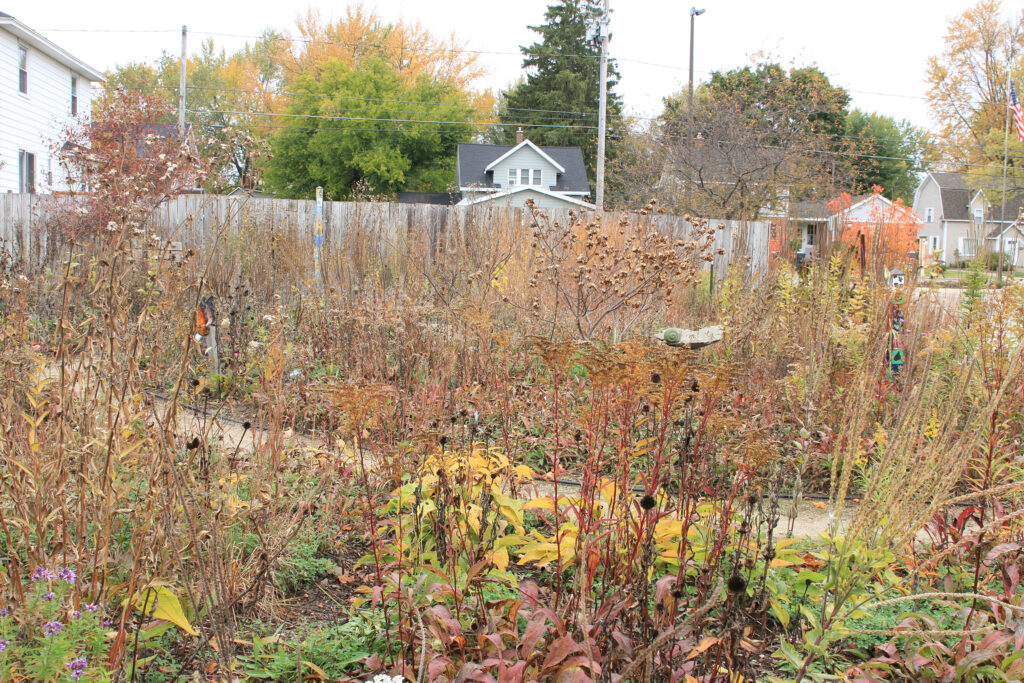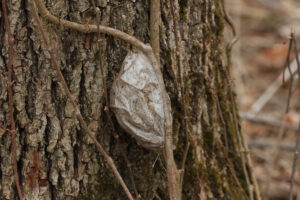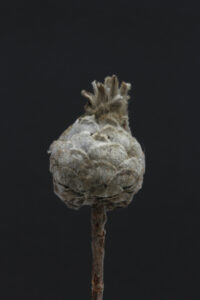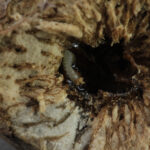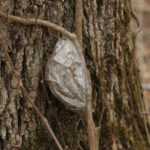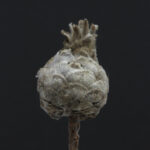Should you cut down and clean up your native plant garden in the fall? Well, that depends on a few factors that you should consider. First, does your community have an ordinance that says that you need to have thins cut back? Along with that thought, is it in an area of the property that needs to be kept clean and have a manicured look? In my yard, most of the native plants are in the back yard. The ones in the front of the house are not tall and are quickly covered with snow once it starts, so they do not pose any appearance issues. Whether the appearance is unsightly or not is often a matter of perspective. Yours and your neighbors may not be the same. So, if it isn’t an ordinance or sight that would garner complaints from neighbors, there are some other reasons for not cutting back or cleaning up the garden of this season’s growth other than weed removal.
The are several wildlife benefits from leaving your native plants as they are for the winter. With the decrease in native insect populations that are directly affecting and causing the decline in many of our bird species, leaving them in the garden for the winter can be beneficial.
Native plants being left in the garden after the growing season benefit birds in various ways. They offer shelter from the weather, places to perch and sources of food. Some birds such as Finches will continue to forage for seeds throughout the winter months. Seeds and berries of native plants are great sources of high value food for birds. Those that consume insects during could winter will also benefit from the over wintering insects in or on the plants and in the leaf litter when it is accessible. Woodpeckers will find larvae in stems and galls. Chickadees and other with also find insects in various stages of development in or on plants and under bark scales or ridges on trees.
Insects, including pollinators overwinter in various stages of development; form egg, larvae or nymph, cocoon or chrysalis to adults. Some bees are passing the cold months as larvae or pupa inside of hollow stems of plants Adult queens of non-social bees like Bumble bees are tucked away in leaf litter or under loose bark of logs. Even insects spending the winter in the ground can benefit from a layer of leaves to lessen the effects of cold and freezing soil. Butterflies will attach their chrysalis to standing plants as do some giant silk moths. Some moths will pupa in the leaf litter as well. So, removing the plant material and leaf litter, will remove the insects you have managed to attract.
Leaving some forms of fruit clusters and galls is also beneficial. For instance, the fruiting cluster of the Staghorn Sumac harbors many insects in varying stages. Birds, especially woodpeckers will consume these insects. Several song and game birds will also eat the seeds. Galls are formed by insects, some of which overwinter in the gall and are removed and consumed by woodpeckers and chickadees. The Pinecone Willow Gall may also harbor as many as 100 insects besides its creator over the winter.
Many native plants also add winter color and dimension to the landscape. This may be colorful berries, tall stiff stems or grasses that wave in the breeze. One last benefit of leaving your native plants and not removing them from the garden is the nutrients and organic matter that the return to the soil.
- Goldenrod Gall Larvae
- Cecropia Moth Cocoon
- Pinecone Willow Gall
 Click on the title of a post to view a full gallery of images.
Click on the title of a post to view a full gallery of images.
